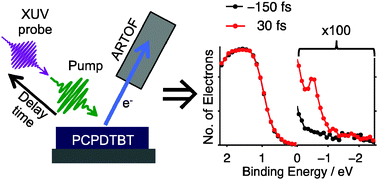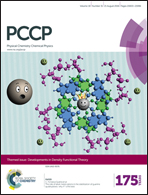Electronic structure dynamics in a low bandgap polymer studied by time-resolved photoelectron spectroscopy†
Abstract
Means to measure the temporal evolution following a photo-excitation in conjugated polymers are a key for the understanding and optimization of their function in applications such as organic solar cells. In this paper we study the electronic structure dynamics by direct pump–probe measurements of the excited electrons in such materials. Specifically, we carried out a time-resolved photoelectron spectroscopy (TRPES) study of the polymer PCPDTBT by combining an extreme ultraviolet (XUV) high harmonic generation source with a time-of-flight spectrometer. After excitation to either the 1st excited state or to a higher excited state, we follow how the electronic structure develops and relaxes on the electron binding energy scale. Specifically, we follow a less than 50 fs relaxation of the higher exited state and a 10 times slower relaxation of the 1st excited state. We corroborate the results using DFT calculations. Our study demonstrates the power of TRPES for studying photo-excited electron energetics and dynamics of solar cell materials.



 Please wait while we load your content...
Please wait while we load your content...